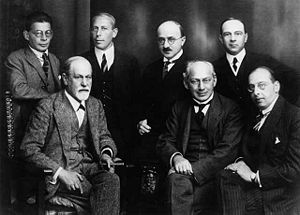Art:7o-Qq1ohspe= Sigmund Freud

The intersection of Sigmund Freud’s psychoanalytic theories and the art world presents a compelling area for exploration, particularly Art:7o-Qq1ohspe= Sigmund Freud the unconscious mind’s role in creative expression. As artists began to incorporate concepts such as dream analysis and symbolism, the canvas transformed into a landscape of hidden desires and complex emotions. This shift not only influenced individual works but also catalyzed movements like Surrealism, prompting a reevaluation of identity and psychological depth in art. What implications does this fusion have for contemporary artistic practices and our understanding of the human psyche?
Freud’s Influence on Art
Sigmund Freud’s theories have profoundly influenced the world of art, shaping both the creation and interpretation of artistic works. His psychoanalytic theory, which emphasizes the significance of the unconscious mind, has encouraged artists to delve into their innermost thoughts and feelings. By exploring these hidden dimensions, artists can create works that resonate with the complexities of human experience, allowing for a deeper connection with their audience.
Freud’s concepts of dream analysis have also played a crucial role in artistic expression. Dreams, viewed as a window into the unconscious, often reveal desires and anxieties that individuals may not consciously acknowledge. Artists have harnessed this insight, utilizing dreamlike imagery and surreal themes to challenge conventional perspectives and evoke emotional responses. Such works invite viewers to embark on their own journeys of introspection and self-discovery.
Moreover, Freud’s emphasis on the interplay between reality and fantasy has encouraged artists to blur the lines between the two, fostering a sense of freedom in creative exploration. This liberation from traditional constraints enables artists to express their unique visions, ultimately enriching the cultural landscape and broadening the understanding of human psychology through art.
Read Also: Art:7jdq13ito54= Stained Glass Windows
The Unconscious in Artistic Art:7o-Qq1ohspe= Sigmund Freud
The exploration of the unconscious mind has become a pivotal component in artistic expression, allowing creators to manifest their innermost thoughts and emotions through their work. Artists increasingly draw on the depths of their psyche, utilizing techniques such as dream analysis and symbolism interpretation to access hidden feelings and ideas. This approach enables a profound connection between the artist’s subconscious and the audience, fostering a shared experience of revelation and understanding.
By tapping into the unconscious, artists can create works that resonate on multiple levels, engaging viewers in a dialogue that transcends mere visual appeal. The symbolism within their art often serves as a bridge to the unconscious, revealing deeper meanings that may not be immediately apparent. This layered complexity invites interpretation, encouraging audiences to explore their own subconscious reactions to the artwork.
Moreover, the act of creation itself becomes a vehicle for self-discovery, as artists confront their fears, desires, and dreams. In this way, artistic expression becomes not only a reflection of the individual’s psyche but also a universal exploration of the human experience, inviting all to engage with the rich tapestry of emotions that lie beneath the surface.
Artists Inspired by Freud
Freud’s theories on the unconscious have profoundly influenced a diverse array of artists, prompting them to delve into psychological themes and explore the depths of human emotion in their work. This exploration is often manifested through Freudian symbolism, where artists employ imagery that reflects the inner workings of the psyche.
For instance, Salvador Dalí’s surrealist paintings manifest his fascination with dream analysis, as he sought to depict the bizarre and often contradictory nature of dreams, revealing hidden desires and fears.
Other notable figures, such as Max Ernst and André Breton, also embraced Freud’s insights, incorporating elements that challenge conventional perception and explore the surreal aspects of human experience. The interplay of the subconscious in their art encourages viewers to engage in their own introspection, inviting them to confront their unconscious motivations and conflicts.
Moreover, contemporary artists continue to draw inspiration from Freudian concepts, utilizing mixed media and installation art to create immersive experiences that resonate with the complexities of identity and psyche.
In this ongoing dialogue between art and psychology, Freud’s legacy endures, inspiring the pursuit of freedom through self-exploration and emotional expression.
Read Also: Art:6pfo8roh7kq= Tim Burton
Conclusion
The intersection of Freud’s theories and the art world reveals a profound exploration of the unconscious mind, inviting viewers to Art:7o-Qq1ohspe= Sigmund Freud the depths of human experience. Surrealism, in particular, serves as a testament to the enduring impact of psychoanalytic thought on artistic expression. By embracing dream imagery and symbolism, artists not only challenge traditional aesthetics but also unveil the complexities of identity and desire, prompting a reevaluation of both art and psychology in modern culture.




